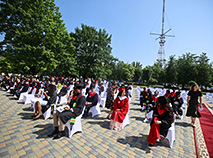Higher education in Belarus
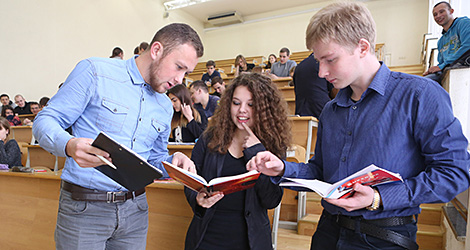
How to apply to a university in Belarus? How much does it cost? What disciplines can international students study?
Belarus is known for top-quality higher education. The country is the CIS leader in terms of educational attainment and the quality of education: the amount of knowledge meets high international standards.
There are 47 higher education institutions: 42 state higher education institutions affiliated with 12 ministries and departments and 5 private higher education institutions.
They include:
-
33 universities
-
9 academies
-
5 institutes
Master's programs are available in the University of the National Academy of Sciences of Belarus and the National Security Academy of the Republic of Belarus.
Higher education by type:
-
general higher education - Bachelor's programs awarding a Bachelor’s degree (4 - 4.5 years) - about 260 majors;
-
advanced higher education - Master's programs awarding a Master’s degree (1 - 2 years) – about 170 majors;
-
specialist higher education - a continuous program of higher education awarding a Master’s degree and qualifications (5-6 years) - more than 40 majors.
Belarus has been promoting the practice-oriented training. Cooperation with employers has been gaining momentum. Universities have their offices (over 1,100) at high-tech enterprises of the country, organizations of the Hi-Tech Park (one of the largest IT clusters in Eastern Europe), the institutes of the National Academy of Sciences of Belarus and also other organizations of the economy and social sector.
Belarusian higher education institutions operate:
-
Over 80 joint laboratories with the world's leading companies
-
About 50 educational centers of the world's leading companies.
Taking into account the global trends and forecasts in the labor market, considering the challenges facing the national economy, the Belarusian higher education system is introducing new approaches to the training of specialists, and implementing the large-scale projects "University 3.0" and "Digital University".
The University 3.0 model focuses on nurturing an innovation and creative environment for scientists, professors and students.
The innovation infrastructure of higher education institutions includes:
-
8 centers for collective use of unique scientific equipment and devices,
-
33 industry research laboratories,
-
3 accredited technology transfer centers,
-
6 science and technology parks,
-
113 start-up centers,
-
Interuniversity Marketing Center for Research and Development.
13 higher education institutions, including 5 regional ones, have joined the University 3.0 project in Belarus.
The Digital University project has been pursued by 13 higher education institutions in Belarus since 2018. It focuses on three major components:
-
tools and infrastructure for access to information resources
-
ICT in the educational and training process, including distance education
-
digitalization of university management processes (business processes)
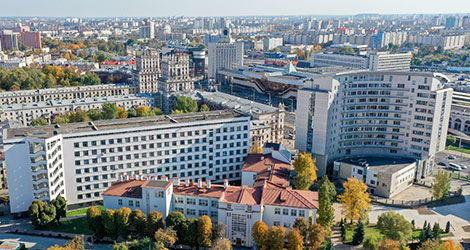
Belarusian universities perform well in international rankings. For example, Belarus’ best university - Belarusian State University (BSU) - is in the top 300 of 30,000 higher learning institutions of the world.
As of January 2025, the following Belarusian universities had spots in top 5,000 universities according to Webometrics (an initiative of the Cybermetrics Lab, a research group belonging to the Consejo Superior de Investigaciones Científicas (CSIC)):
-
Belarusian State University (1202)
-
Belarusian State Medical University (3413)
-
Francisk Skorina Gomel State University (3548)
-
Yanka Kupala Grodno State University (3627)
- Belarusian State University of Informatics and Radioelectronics (3993)
-
Belarusian National Technical University (4376)
-
Belarusian State Technological University (4895)
The QS World University Rankings 2024 compiled by England-based QA Quacquarelli Symonds Limited has explored 1,500 leading universities from around the world. Several Belarusian universities are also featured in the rankings: Belarusian State University (387), Belarusian National Technical University (801-850), Belarusian State University of Informatics and Radioelectronics (1201-1400).
Belarusian universities were also ranked by SIR World Report 2023 (the work of the SCImago Research Group, a Spain-based research organization consisting of members of the Spanish National Research Council and Spain’s biggest universities). The SCImago Institutions Rankings include Belarusian State University (5501), Belarusian State Medical University (7680), Belarusian State University of Informatics and Radioelectronics (8098), Belarusian National Technical University (8165), Francisk Skorina Gomel State University (8320), Belarusian State Technological University (8381), and Yanka Kupala Grodno State University (8396).
The prestigious Times Higher Education (THE) that covered more than 1,900 universities in 108 countries and territories in 2024, features Belarusian State University.
Top 5 universities in Belarus
-
Belarusian State University (BSU) – 22,900 students
-
Belarusian National Technical University (BNTU) – 21,100 students
-
Belarusian State Economic University (BSEU) – 14,400 students
-
Belarusian State University of Informatics and Radioelectronics (BSUIR) – 12,600 students
-
Yanka Kupala Grodno State University – 10,600 students
Belarusian State University
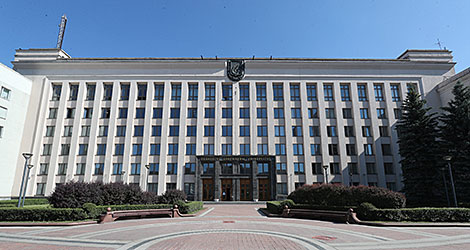 BSU is the country's biggest university and is ranked in the 1% of the best universities in the world. It is featured in 9 global and 13 subject rankings, including the ‘big three’, the most authoritative rankings of the world's top 1,000 universities. BSU, which celebrated its 100th anniversary in 2021, is a large-scale complex that incorporates 27 faculties, institutes and institutions, 177 chairs, 100 research laboratories (including 60 student ones), 4 research institutes, 2 scientific centers and 1 startup center, 6 innovative enterprises, 3 educational and experimental stations, 6 museums, 1 science and technology park. The BSU electronic library is one of the five best university repositories in the world (according to the Ranking Web of World Repositories).
BSU is the country's biggest university and is ranked in the 1% of the best universities in the world. It is featured in 9 global and 13 subject rankings, including the ‘big three’, the most authoritative rankings of the world's top 1,000 universities. BSU, which celebrated its 100th anniversary in 2021, is a large-scale complex that incorporates 27 faculties, institutes and institutions, 177 chairs, 100 research laboratories (including 60 student ones), 4 research institutes, 2 scientific centers and 1 startup center, 6 innovative enterprises, 3 educational and experimental stations, 6 museums, 1 science and technology park. The BSU electronic library is one of the five best university repositories in the world (according to the Ranking Web of World Repositories).
Belarusian National Technical University
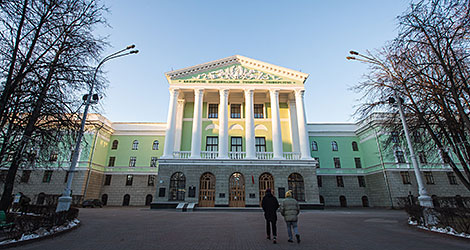 BNTU is the leader of engineering education in Belarus. Established in 1920, it is the only university in the country to have the status of a national university. It enrolls more than 30,000 students and offers almost all possible technical majors. The university incorporates 16 faculties, 9 colleges and 6 institutes, 32 research laboratories, a science and technology park, 20 innovative enterprises, a startup school, a FABLAB, and experimental production. It also operates dormitories, sports facilities and a sanatorium. BNTU has the world's first Confucius Institute for Science and Technology.
BNTU is the leader of engineering education in Belarus. Established in 1920, it is the only university in the country to have the status of a national university. It enrolls more than 30,000 students and offers almost all possible technical majors. The university incorporates 16 faculties, 9 colleges and 6 institutes, 32 research laboratories, a science and technology park, 20 innovative enterprises, a startup school, a FABLAB, and experimental production. It also operates dormitories, sports facilities and a sanatorium. BNTU has the world's first Confucius Institute for Science and Technology.
Belarusian State Economic University
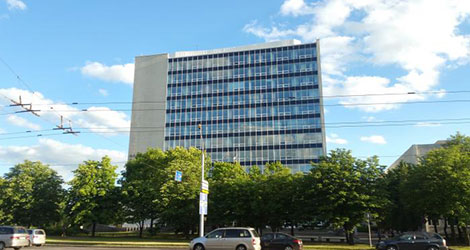 BSEU is the flagship economic university in Belarus that offers the widest range of specialties in the field of economics, finance, management, marketing. Great emphasis in teaching students is placed on the knowledge of modern information technologies and foreign languages. For example, the youngest faculty – the digital economy faculty – trains professionals in programs combining economics and IT, big data analytics. The university consists of 10 faculties, the Institute for Advanced Training and Retraining of Economic Personnel, the Higher School of Management and Business, the Center for Pre-University Training And Vocational Guidance, 1 college, educational and scientific laboratories, a fitness and health center, and a campus.
BSEU is the flagship economic university in Belarus that offers the widest range of specialties in the field of economics, finance, management, marketing. Great emphasis in teaching students is placed on the knowledge of modern information technologies and foreign languages. For example, the youngest faculty – the digital economy faculty – trains professionals in programs combining economics and IT, big data analytics. The university consists of 10 faculties, the Institute for Advanced Training and Retraining of Economic Personnel, the Higher School of Management and Business, the Center for Pre-University Training And Vocational Guidance, 1 college, educational and scientific laboratories, a fitness and health center, and a campus.
Belarusian State University of Informatics and Radioelectronics
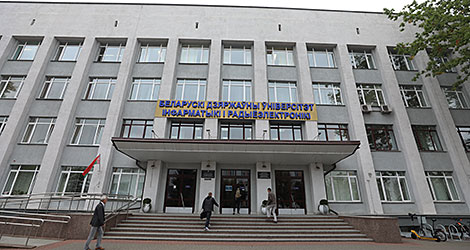 BSUIR is the main university providing training in information technology and is among the most popular universities in Belarus. Today it is a large educational, research and innovation complex consisting of 8 faculties, 32 chairs, research institutes, the Institute of Information Technologies (2 faculties and 4 departments). In addition, the university has 12 educational centers of the world's leading companies: the National Instruments educational center, the IBM technology competence center, the Cisco Academy branch, the SAP Academic Center for SAP cooperation programs with “University Alliance” universities, Android Software Center, INTES, A1QA, and Huawei.
BSUIR is the main university providing training in information technology and is among the most popular universities in Belarus. Today it is a large educational, research and innovation complex consisting of 8 faculties, 32 chairs, research institutes, the Institute of Information Technologies (2 faculties and 4 departments). In addition, the university has 12 educational centers of the world's leading companies: the National Instruments educational center, the IBM technology competence center, the Cisco Academy branch, the SAP Academic Center for SAP cooperation programs with “University Alliance” universities, Android Software Center, INTES, A1QA, and Huawei.
Yanka Kupala Grodno State University
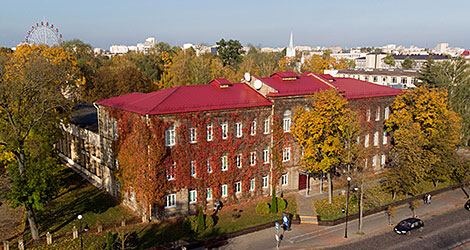 Yanka Kupala Grodno State University is the largest regional university in Belarus providing training across a wide range of specialties and responding rapidly to market needs. It traditionally features in independent international rankings as one of the best Belarusian universities. It incorporates 15 faculties, the Institute for Advanced Training and Retraining of Personnel, 4 colleges, Technolab educational, science and production center with the status of a scientific and technological park, the Center for Technology Transfer. Yanka Kupala Grodno State University became the first non-metropolitan university to be included in the University 3.0 model project. It closely cooperates with manufacturing companies to design and manufacture innovative products and technologies. It also maintains ties with more than 150 foreign universities.
Yanka Kupala Grodno State University is the largest regional university in Belarus providing training across a wide range of specialties and responding rapidly to market needs. It traditionally features in independent international rankings as one of the best Belarusian universities. It incorporates 15 faculties, the Institute for Advanced Training and Retraining of Personnel, 4 colleges, Technolab educational, science and production center with the status of a scientific and technological park, the Center for Technology Transfer. Yanka Kupala Grodno State University became the first non-metropolitan university to be included in the University 3.0 model project. It closely cooperates with manufacturing companies to design and manufacture innovative products and technologies. It also maintains ties with more than 150 foreign universities.
For decades, medical universities have been on the list of the most in-demand universities for both Belarusian and foreign applicants. There are four of them in Belarus:
-
Belarusian State Medical University
-
Grodno State Medical University
-
Vitebsk State Medical University
-
Gomel State Medical University
The full list of higher education institutions in Belarus with contact information is here.
Higher education for foreign nationals in Belarus
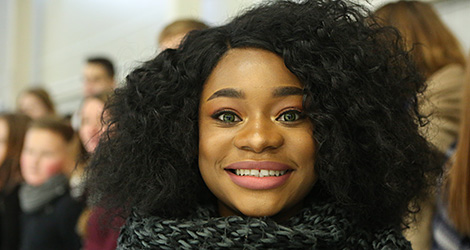
Belarus is a party to the Hague Convention abolishing the requirement of legalization for foreign public documents and the Lisbon Convention on the Recognition of Qualifications concerning Higher Education in the European Region.
Over 30,000 foreign citizens from almost 120 countries are currently enrolled in 47 higher education institutions in Belarus. Belarusian higher education institutions offer bachelor's and master's programs in Russian and English.
Foreign citizens and stateless persons are admitted to Belarusian universities on a tuition fee basis:
-
upon completion of the Russian language course at a respective university and subsequent attestation;
-
based on an interview that establishes the level of proficiency in the language of instruction.
There is also an opportunity to get a grant for training (including under international agreements of the Republic of Belarus) in accordance with the procedure established by the Government of the Republic of Belarus.
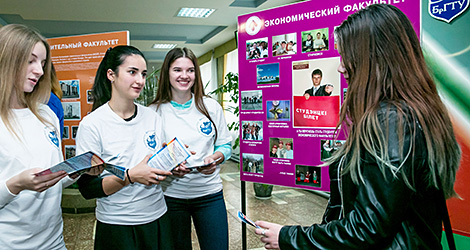
Citizens of the Russian Federation, the Republic of Kazakhstan, the Kyrgyz Republic, the Republic of Tajikistan and citizens of the Republic of Belarus permanently residing abroad can get enrolled:
-
on the terms stipulated for foreign citizens;
-
on the terms stipulated for citizens of the Republic of Belarus (free of charge and tuition fee basis based on the results of centralized testing).
Admission process for foreign students
Information on admission is available on the websites of higher education institutions and on the official website on higher education in the Republic of Belarus for international students at studyinbelarus.by
Useful links for applicants to universities in Belarus
-
ABITURIENT.BY for applicants from Belarus and abroad
Tuition fees
The tuition fee for foreign citizens in Belarus depends on the educational program, education institution and major and ranges from $1,100 to $5,000 per academic year on average.
Accommodation for foreign students
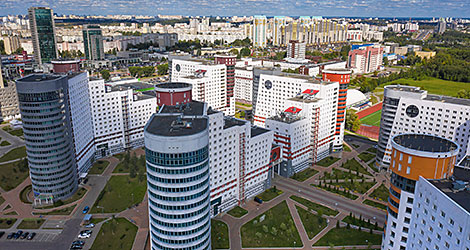
All colleges and universities in Belarus have an accommodation department which helps you get a residence permit and find lodgings. Most students live in student dormitories that are comfortable and cheap.
There is Student Village in Minsk. It is a big modern complex for students of seven Minsk universities, including foreigners. In addition to nine large dormitories, the campus includes a kindergarten, a clinic, a shopping center, a gym and an ice arena. Every dormitory has gyms, canteens, cafes, and medical stations.


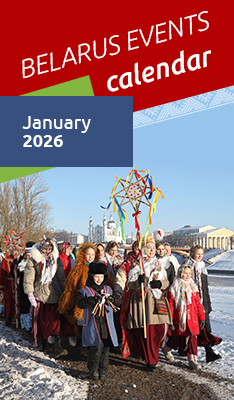




 print version
print version make home page
make home page add to bookmarks
add to bookmarks